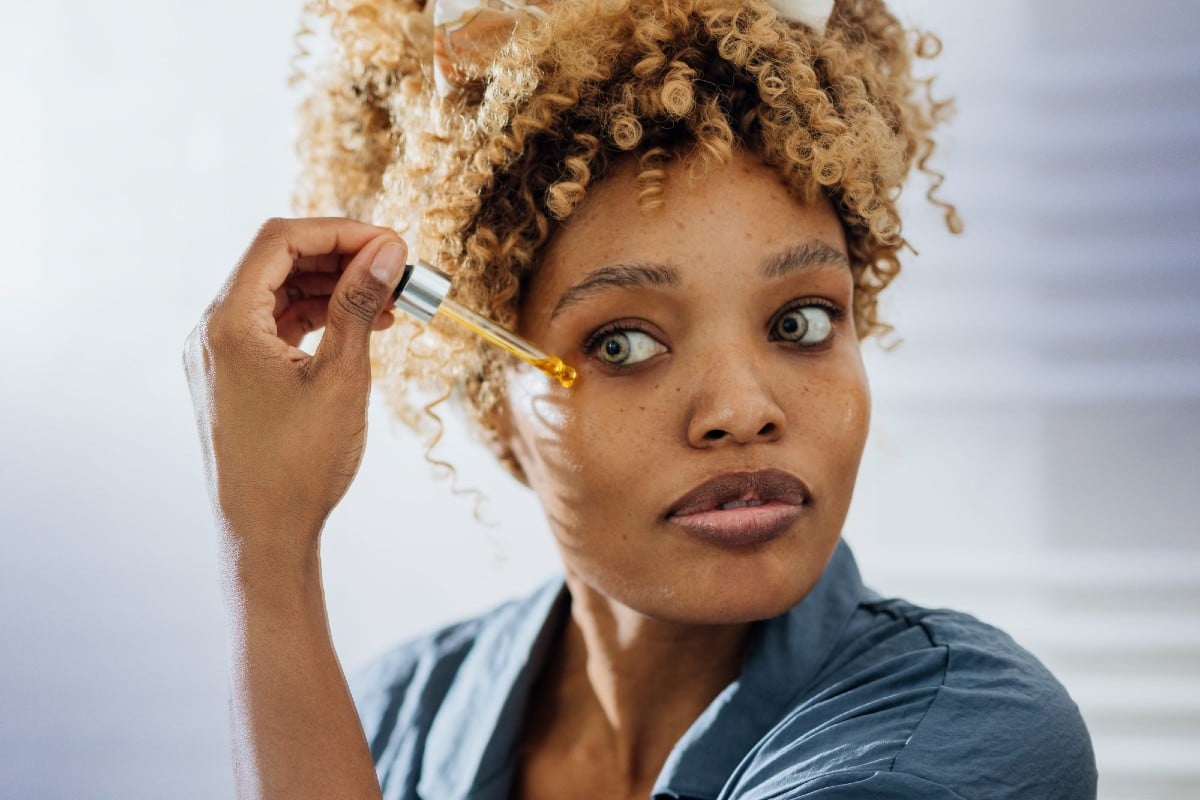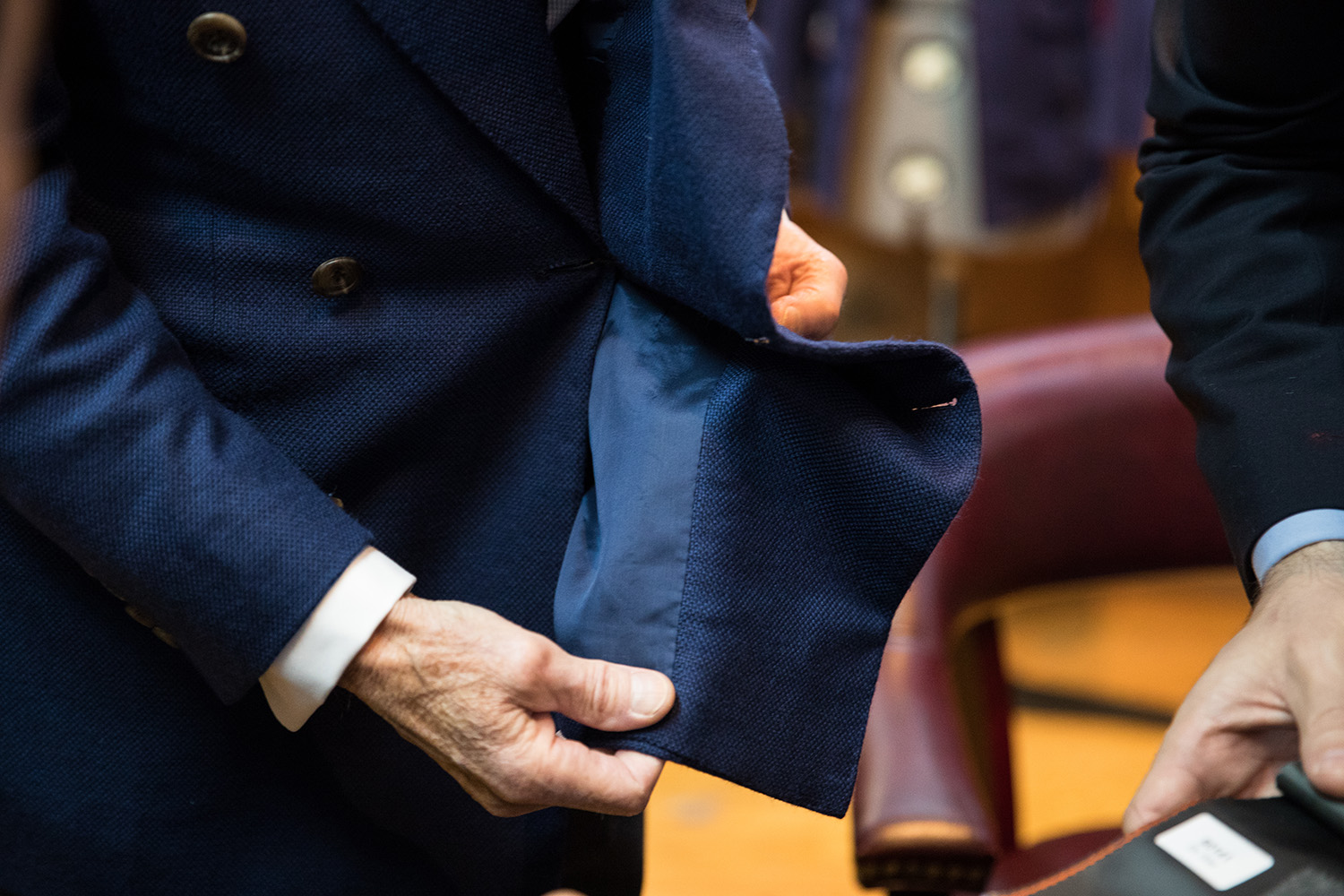Table of Contents
[ad_1]

While retinol is one of the most celebrated ingredients on the skincare scene — gratitude to its skin-changing ability to promote quicker cell turnover — for some, it simply doesn’t live up to the hype. If you feel retinol doesn’t love you back and doesn’t deliver the Instagrammable results you’ve been looking for, you came to the right place. Here we’re deep-diving into eight reasons why retinol may not work for you and how you can fix it so you can enjoy all the benefits of this skin savior.
You use the wrong concentration
One of the reasons retinol isn’t working for you might be that you’re using low-concentrated products that aren’t formulated to correct but rather to prevent or alleviate. Although concentrations of 0.1% to 0.3% are ok to start your retinol journey and are great for building skin tolerance, they may not be enough to induce serious changes.
So once you have passed the acclimation period, move to a higher-strength product — preferably a retinol serum, since it penetrates deeper into the skin layers than creams. Products like SkinMedica Retinol Complex 1.0 and Murad Resurgence Retinol Youth Renewal Serum are life-changing, believe me. And of course, only do it if your skin can handle more potent formulas and you don’t experience excessive dryness or irritation. For the record, most studies have concluded that retinol in concentrations of 0.5% to 1% is ideal for addressing wrinkles, dark spots, and rough texture.[1][2]
You don’t use it enough
OK, now you have a product with a higher concentration, but retinol still doesn’t work the way you wish. If that’s the case, it could be a sign that you don’t use your retinol product enough. Even if when you start your journey, it’s totally fine to use retinol twice weekly to adjust to it, once trained, the skin might need more frequent applications for visible outcomes. Hence, you should gradually increase the frequency little by little until your skin gets used to nightly application — because this is when all the magic happens. So for the best results, use retinol daily (or better said, nightly).
You didn’t give it enough time
If you think retinol isn’t working for you, you maybe haven’t given it enough time to show its true potential. Like any other ingredient, retinol takes months to deliver results, so don’t expect a baby-like skin overnight.
The thumb rule is that you should use retinol for at least 6 to 12 weeks to see visible changes in your skin’s appearance.[1]
You’re mixing it with the wrong products
Retinol is a fastidious ingredient and can’t be paired with any skincare active as it can cancel its effects or, even worse, trigger irritation. That said, if retinol isn’t working, you probably mix it with ingredients like benzoyl peroxide, which can actually deactivate retinol. Exfoliants like glycolic acid should also be avoided as they can over-exfoliate and dry out the skin when used together with retinol. The moral of the story? Steer away from drying ingredients and embrace hydrating and replenishing products.
You use retinol after moisturizer
Using a moisturizer with retinol is the key to reducing possible dryness and irritation — no room for negotiation here. However, applying the moisturizer first creates an extra layer of protection between the skin and retinol, which can affect retinol’s potency and its ability to penetrate the epidermis. That’s why you should use your moisturizer after retinol, so they don’t interfere with each other. For maximum results, wait for 10 to 20 minutes before you layer the moisturizer, so you leave enough time for retinol to get absorbed into the skin and do its magic.
You use the wrong form of retinol
The beauty of retinol is that it comes in many forms, so it’s easy to find one that works for you. Yet, there’s also a chance you use a derivative that is not powerful enough to meet your expectations. Hence, having the right type of retinol in your beauty ritual could skyrocket the results in a matter of weeks.
That being said, if your skin is easily reactive, your best bet is retinol esters, like retinyl propionate. They’re more stable forms of retinol created by modifying the molecular structure and how retinol is converted into the body so that it works more delicate. Encapsulated retinol is also a great choice if retinol isn’t working for you, as it’s more effective while keeping side effects at a minimum. It’s basically a delivery system that carries the retinol molecules in deeper layers of the skin and gradually releases them to reach all sites of action. Since the molecules are slowly released, the retinol is maintained in the skin for longer, working more effectively and gently.
Finally, for dramatic results, retinaldehyde is the MVP. It’s the most potent OTC retinoid since it requires only one conversion step to get into retinoic acid (the active form of vitamin A), compared to retinol which needs to be converted twice (once to retinaldehyde and only then to retinoic acid).
You don’t wear sunscreen
Another reason why retinol does not work could actually be the sun. Retinol is sensitive to sunlight, so if you expose your skin to the sun immediately after applying your product, the UV radiation may deactivate retinol and make it less effective. So what’s the best thing to do? Simple, use retinol at night and wear sunscreen every day.
You didn’t allow your skin to recover
Retinol works by stimulating cell turnover, accelerating the process by which old cells are replaced by newer, healthier ones. However, the thing is that the newly created cells will not be able to defend the skin properly for a while, leaving you with a compromised barrier that’s more susceptible to damage. So if you throw another retinol before your skin is fully recovered, you’ll most likely negate all of the benefits of retinol and reduce its effects. For the best, use these moisturizers after retinol to speed up the recovery process and allow the active to work better.
Final words
As you can see, retinol isn’t the friendliest nor the easiest ingredient to play with, as so many factors can make it less effective. But if you do your homework, you can optimize your skincare routine to overcome all these foes that affect the potency of retinol and get the best of it.
References
- Mukherjee S, Date A, Patravale V, Korting HC, Roeder A, Weindl G. Retinoids in the treatment of skin aging: an overview of clinical efficacy and safety. Clin Interv Aging. 2006;1(4):327-348. doi:10.2147/ciia.2006.1.4.327
- Dhaliwal S, Rybak I, Ellis SR, Notay M, Trivedi M, Burney W, Vaughn AR, Nguyen M, Reiter P, Bosanac S, Yan H, Foolad N, Sivamani RK. Prospective, randomized, double-blind assessment of topical bakuchiol and retinol for facial photoageing. Br J Dermatol. 2019 Feb;180(2):289-296. doi: 10.1111/bjd.16918. Epub 2018 Sep 21. PMID: 29947134.
[ad_2]
Source link


More Stories
Cosmetics for Women: Achieving Long-Lasting Results
Women’s Cosmetics: Best Products for a Youthful Glow
Women’s Cosmetics Guide: Top Products for 2024